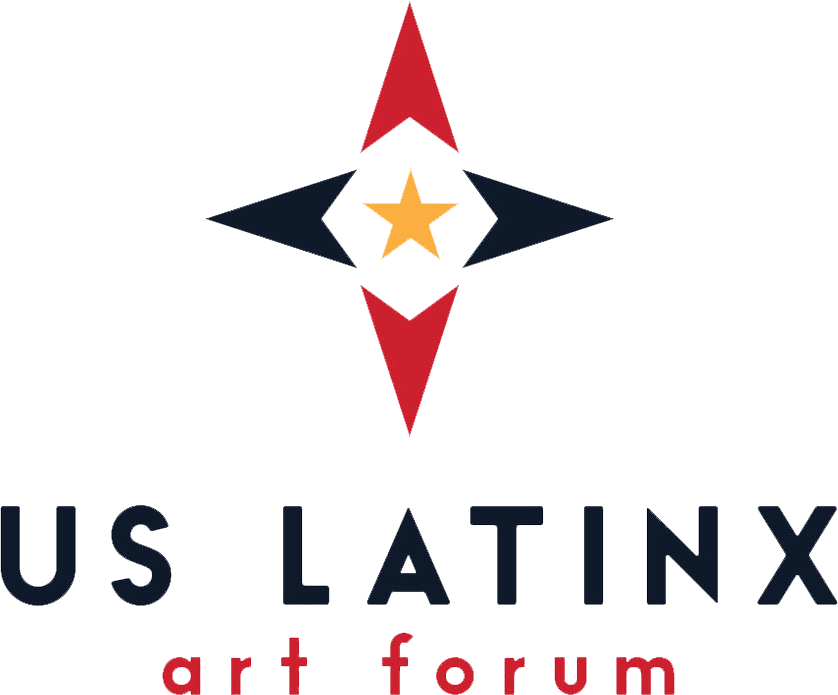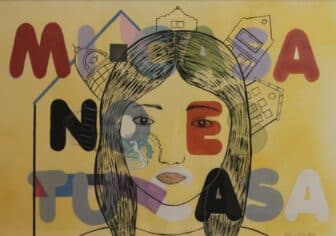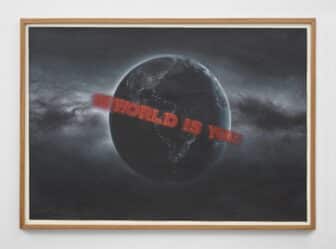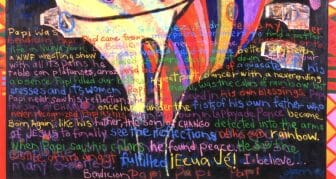
Regarding Cuba in Coco Fusco’s To Live in June with Your Tongue Hanging Out

José Esteban Muñoz wrote that a vision-interrupting fog mediates how Cuba is seen, particularly from the vantage of the United States. “There is a haze that obscures any view, . . . composed of certain ideological mists that we might understand as the United States’s endless propaganda war against the island, the rage and melancholic romanticism of the Cubans outside the island, and the North American Left’s precritical celebration of the revolution.”1 Adding to this haze are the ever-shifting tensions between state and extra-official discourses on the island and the contested claims they yield. These dynamics atomize across a perceptual sphere, clouding efforts to make sense of contemporary Cuba. Coco Fusco’s engagement with Cuba comprises only a small piece of a varied career dedicated to the operations of power within the folds of coloniality, gender, race, and militarism and which we might provisionally triangulate across performance, writing, and activism. At the same time, her work regarding Cuba has been a consistent facet of Fusco’s art for decades. It has often inhabited—and been received from within—this haze. As she puts it, “Each time I discuss the Cuban art scene with foreigners, these questions [of opportunism and futility] arise. There are no simple answers.”2
Fusco has collaborated widely with artists and writers on and off the island, where she began visiting in the 1980s. While in Cuba, she has staged performances and contributed to events, often with independent artists and alternative spaces. Off the island, she has used social media to increase the visibility of Cuban artists, curated exhibitions of their work, contributed decisive art criticism on them, and been a key chronicler of the recent retrenchment of artistic freedoms. Throughout, her attention to jineteras and her insistence on centering Afro-Cuban artists such as Luis Manuel Otero Alcántara, who has been incarcerated since 2021, have challenged chimerical visions of Cuba as an emblem of racial and gender equality. In these ways, Fusco, alongside other artists like María Magdalena Campos-Pons and Tania Bruguera, has increased the global visibility of contemporary cultural production on the island, particularly by independent, “dissident,” and Afro-Cuban artists. In framing their work, moreover, in relation to discourses of human rights and artistic expression, Fusco argues for a principled critique of the Cuban state grounded in the material conditions that artists face. Her commitment to art on the edges of the official has been sustained across decades. Those who “unleash the demons that others try vehemently to hide,” she writes in The Bodies that Were Not Ours, “are the people I like to write about the most.”3
Candice Amich notes that Fusco’s collaboration with Cuban cultural workers suggests a new model of exilic mobility, which is notable given centralized Cuban state policy’s aversion to these collaborations.4 Beyond what Fusco’s works say about these circuits, however, there is also an evident impulse to approach collaboration with artists on the island horizontally, ultimately challenging the “on-off” binary that so often insists on separating Cuba from the diaspora.5 As Fusco herself points out, “The work I do is not reducible to the things I make alone—it includes the dreams I share and the cultures I build with others.”6 While collaboration need not be inherently good and consensus can be a world-flattening, I propose that Fusco’s work on Cuba often pursues engagement with those on the island as a means of cutting through the haze and lending coherence to a hard-to-see place.
In the 2010s Fusco began sharing a suite of videos that considered the intersection of Cuban poetics and revolutionary politics. Those familiar with the grimly ludic nature of The Couple in the Cage, a collaboration with Guillermo Gómez-Peña, or her turn as ape psychologist Dr. Zira, will observe that tonally, these videos take a more restrained and austere approach. They have both the mournfulness and gravity of a wake and, at times, the warmth of a homecoming. Best understood within the genre of the essay film, these videos combine Fusco’s propensity as a researcher and acuity as a writer with an evident ability to transform historical detail and archival marginalia through intimacy and affect. Taken together, these videos constitute a counter-archive of cultural suppression during the revolutionary period from the Padilla Affair of the 1960s onward.7 I say counter-archive because while there exists a long tradition of revolutionary patronage of the arts, there is an almost equally long one of censorship, something I have elsewhere suggested constitutes a system of cultural imperilment.8 Fusco’s videos aren’t driven by aesthetic flourishes and their visual language is not overtly contrived. Instead, Fusco and her interlocutors confront the haze with desultory clarity and precision.
The title of her 2018 video To Live in June with Your Tongue Hanging Out riffs on a poem by Reinaldo Arenas (1943–1990), substituting the author’s original word choice, “To Die,” with an insistence on living. The video opens with a set of intertitles that offer the viewer expository detail on the film’s absented subject. Arenas came of age amid the Revolution but quickly ran afoul of the government for his queerness, criticism of the state, and preference for hallucinatory narratives that didn’t conform to the narrow scripts of heroism and revolutionary utility. After being incarcerated for two years, the author left the island in 1980 in the Mariel boat lift and continued to write before ultimately committing suicide in Miami amid health complications from AIDS, his work all but erased on the island. As the video shows, fingers flip through the card catalog at the José Martí National Library; they linger where his name might be.
With this context established, the video works toward a sensorial aperture at the interstice of voiced poetry and the camera’s own desultory language. It proceeds to trace the convergence of poets Amaury Pacheco and Iris Ruiz and actor Lynn Cruz on Lenin Park, where Arenas once took shelter as a fugitive of the state and held clandestine tertulias, or readings. As Fusco’s voice reminds the viewer, the park looks like a Roman ruin despite being built in the 1970s.9 In an attempt to recreate these gatherings, the video follows Pacheco, Ruiz, and Cruz in an open-air recitation of his poem “Introduction to the Symbol of Faith,” which in its own way meditates on the difficulty of sensemaking in Cuba amid “the chaos of all the cries.”10 Recited from memory, there are moments of pause and forgetfulness that underline the author’s erasure from the island, as well as of collective remembering and encouragement. Pacheco mimes the figurative elements of Ruiz’s section and moves his lips during Cruz’s reading. Their conversation is interspersed with shots of the sprawling park, an open space that provides a hollow for the words to resonate and amplify. That Arenas’s words, in particular, are spoken by a more recent generation reactivates them, inviting comparisons and provoking resonances between decades-old critiques of a revolutionary state and a more recent moment. After the reading concludes, the three reflect on the poem’s continued relevance. For Cruz, “It feels, as if, as the poem unfolds, it’s still happening now.”11 They all come together in a space of shared aperture in which the haze is diminished—even, as Fusco’s closing voiceover reminds us, “if only for a moment.”12
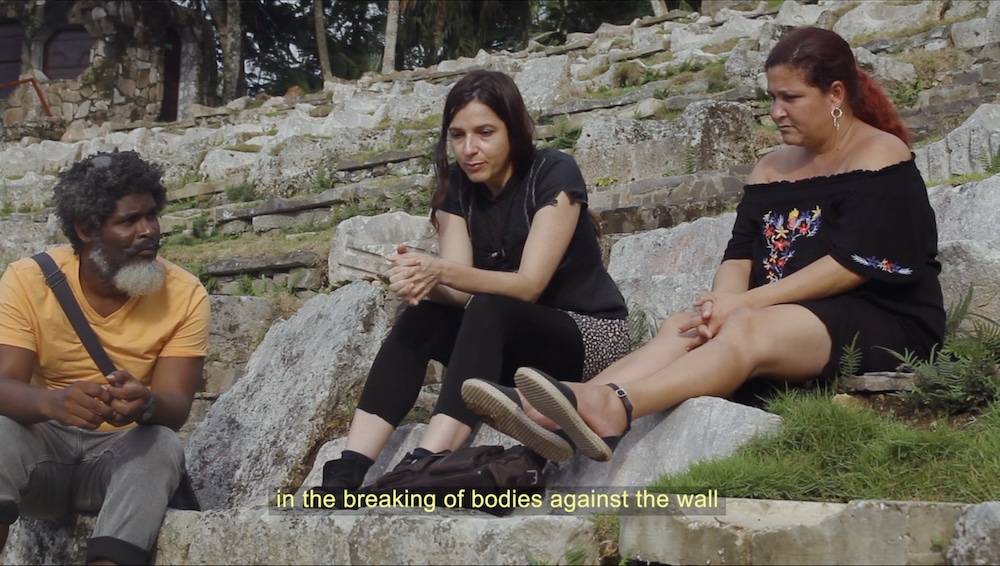
The film’s production and Fusco’s own experience, however, affirm that these moments of already fraught poetic aperture have only grown more scarce.13 The production of To Live in June with Your Tongue Hanging Out came amid a showdown between the state and independent artists, which followed an independent biennial. After over three decades of traveling to the island, Fusco was denied entry in the leadup to filming.14 And so, alongside the Cubans featured in the video, Fusco worked with two “blue-eyed Americans” who reached the island and a group of Cuba-based collaborators to complete the film.15 Yanelys Nuñez Leyva, activist cofounder of the San Isidro Movement and cocurator of the independent biennial, is credited as the production manager. She shared that she first met Fusco through Sandra Ceballos, the founder of Espacio Aglutinador, Cuba’s longest-running independent art gallery. In the act of covert, guerilla filmmaking, Nuñez Leyva emphasized how they coordinated carefully, kept a low profile by using inconspicuous cameras, and were always vigilant of state surveillance.16 Nuñez Leyva’s account of the video’s making further affirms that for Fusco, collaboration is part of the work itself. As both form and practice, this video work centers collaboration as a mode of diminishing, even imperfectly, Muñoz’s haze. At the same time, it bears recalling that, amid the video’s post-production, Decree 349 would severely truncate possibilities for independent artistic production.17 Moreover, in the intervening years, many of Fusco’s collaborators—including Pacheco, Ruiz, and Nuñez Leyva—have since left the island. Their departure, and tens of thousands of others, has made the possibility of collective sensemaking only hazier.
Endnotes
- José Esteban Muñoz. “The Onus of Seeing Cuba: Nilo Cruz’s Cubanía.” South Atlantic Quarterly 99, nos. 2–3 (July 1, 2000): 455–60. https://doi.org/10.1215/00382876-99-2-3-455. ↩︎
- Coco Fuso. Dangerous Moves: Performance and Politics in Cuba. London: Tate Publishing, 2015, 185. ↩︎
- Coco Fusco, introduction, in “The Bodies That Were Not Ours” And Other Writings. (London: Routledge, 2001), xv. ↩︎
- Candice Amich, “Playing Dead in Cuba: Coco Fusco’s Stagings of Dissensus,” Theatre Research International 34, no. 3 (October 2009): 267–77, https://doi.org/10.1017/S030788330999006X. ↩︎
- Coco Fusco, conversation with author, August 14, 2024. ↩︎
- Coco Fusco, introduction, in Coco Fusco: Tomorrow, I Will Become an Island, ed. Olga M. Viso. (London: Thames & Hudson, 2023,) 9. ↩︎
- These videos include La botella al mar de María Elena (2015), La confesión (2015), “The Art of Intervention: The Performances of JuanSí González” (2016), and To Live in June with Your Tongue Hanging Out (2018). ↩︎
- Luke Urbain. Forthcoming. “The Imperiled Text: Rethinking Censorship in Reinaldo Arenas’s Otra Vez El Mar and Antes Que Anochezca,” Cuban Studies 54 (2025). ↩︎
- Coco Fusco, To Live in June with Your Tongue Hanging Out, 2018. ↩︎
- Fusco, To Live in June. ↩︎
- Fusco, To Live in June. ↩︎
- Fusco, To Live in June. ↩︎
- Coco Fusco, conversation with author, August 14, 2024. ↩︎
- Fusco had been denied a visa in 1994 as a result of articles she published about the Cuban art scene, and was expelled from the country in 2019. Fusco, message to the editors, November 10, 2024. ↩︎
- Fusco, conversation with author, August 14, 2024. ↩︎
- Yanelys Nuñez Leyva, messages to author, June 19, 2024. ↩︎
- The independent #00Bienial ran May 5–15, 2018 in spaces across Havana and was organized by Luis Manuel Otero Alcántara and Yanelys Nuñez Leyva; Decree 349, first published in the Gaceta Oficial (Havana) in July 2018 and put into effect in December 2018, establishes punitive measures for unauthorized exhibitions, performances, and concerts. ↩︎
Luke Urbain is a scholar of Cuban, Caribbean, and diasporic cultural production. They work as the Program Manager for Cornell’s Latin American and Caribbean Studies Program.
Cite this essay: Luke Urbain, “Regarding Cuba in Coco Fusco’s To Live in June with Your Tongue Hanging Out,” in X as Intersection: Writing on Latinx Art, January 15, 2025, accessed [DATE], https://uslaf.org/essay/regarding-cuba-in-coco-fuscos-to-live-in-june-with-your-tongue-hanging-out/.
